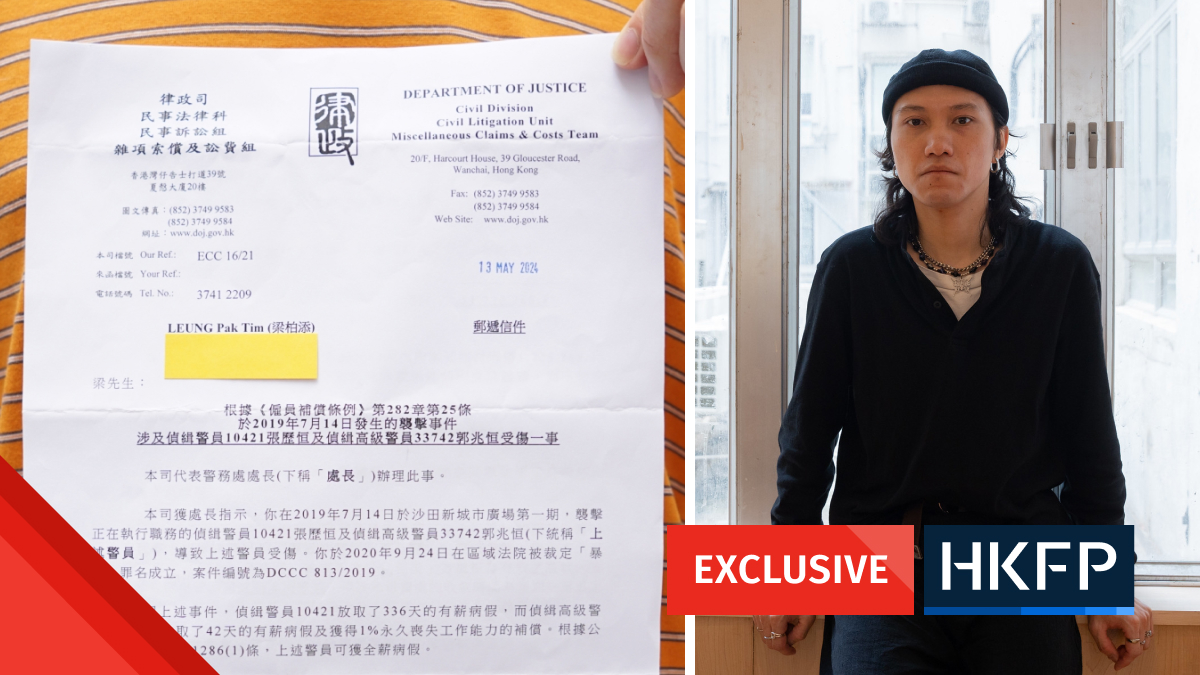Ten years ago this month, Hong Kong’s main container port was rocked by one of the longest labour strikes in the city’s history.

Disgruntled by low wages – their pay was lower in 2013 than in 1996 – as well as poor working conditions and long hours, hundreds of contracted dock workers at Kwai Tsing Container Terminals went on strike for a 20 per cent pay rise – the equivalent of inflation over the previous 17 years – and better conditions.
After 40 straight days of strikes and protests, dock workers accepted a 9.8 per cent wage increase. They were given a 10 per cent pay rise the following year, ultimately meeting their initial demand – almost.
The dockers’ industrial action rode on the success of the steel rod workers’ strike in 2007, and was staged at a time when civil society in the city was still active.
But in the decade since that hard-fought victory, the strike’s organiser – the Union of Hong Kong Dockers – has lost many of its old allies in the labour movement.
The pro-democracy Hong Kong Confederation of Trade Unions – the city’s largest coalition of independent trade unions with which the dockers were affiliated – disbanded two years ago citing physical threats. Dozens of civil society groups have followed suit since the national security law came into force in June 2020.

Former Labour Party lawmaker Lee Cheuk-yan – who was among the leading figures in the 2013 strike – is in custody awaiting trial under the national security law.
Despite this, Chan Yum-wo, who led the dockers’ union during the 2013 strike, said he still believeds the public will speak out whenever they saw unfairness.
Critical point
Chan, now 71, cited Hongkongers’ grievances over the screen falling incident at the Mirror concert and the collapse of a tower crane that killed three in September last year.
Chan said he believes debates on labour issues are still allowed in the city, as lawmakers still hear demands from labour concern groups and question the authorities.
“When industrial safety is completely ignored, or when people’s wages are slashed without a reason… I believe none of Hong Kong’s underprivileged groups will accept it. Even the so-called elites will be disgruntled in their hearts,” the retired dock worker said.
“When you are forced to a critical point, you must come out and resist: the question is with what methods.”
The same could be spoken for the dockers who joined the 2013 strike. Chan said low pay and heavy workloads had been longstanding problems.

Although he retired in 2016 and has since stepped down as the union’s chairperson, the greying Chan still gets emotional when discussing the strike.
In the years leading up to 2013, dockers staged a number of industrial actions but none lasted for more than two days. It was not until 2013 that Chan finally saw the determination and courage in his co-workers to fight for their rights.
Ahead of the strike, dock workers held two protests outside the offices of Hongkong International Terminals Limited (HIT), the port operator who outsourced the employment of dock workers, and Hutchison Whampoa, tycoon Li Ka-shing’s flagship corporation that owns HIT. They were ignored in both instances.
At 8:00 a.m. on March 28, around 200 dockers gathered at the Kwai Tsing Container Terminals and demanded to meet their employers. After waiting for an hour and half, no bosses had shown up.

“If they had come out at 9:30 a.m. and promised a pay rise of HK$300 to HK$400… it would have been resolved once and for all,” Chan said.
But with their demands unanswered, workers charged into the terminals, marking the beginning of their 40-day long strike. The rest was history.
Gaining trust
It took the dockers’ union years to build up to the 2013 strike. The prerequisite of any labour movement, Chan said, was to earn workers’ trust.
Before 2013, he said, industrial action always ended in favour of the bosses. In 1996 dockers struck to force out one labour contractor, only to be replaced by another which hired fewer workers and paid less.
“I thought to myself: ‘Why after so many strikes of different scales did the contractors come out on top every single time?’ We workers weren’t even better off by 10 cents,” he said.
In Chan’s mind, their failure was due to the absence of “a union that truly stands for grassroot workers’ rights.”

After that, he made it his mission to visit every docker suffering from work-related injuries that he knew of. “From Princess Margaret Hospital, to as far as Yuen Long… even in Shenzhen, I would go and visit them,” Chan said. He also made a point of attending the celebrations and funerals of dock workers and their families.
His only purpose, he said, was to let the dockers know he was fighting for them rather than seeking a supervisor job. He retired in 2016 with the same job title – dock worker – as he started with around 30 years earlier.
In the same vein, the former union leader said everyone should take care of those close to them. “When you help to make their voices heard… there must be others supporting you.”
He acknowledged that the social atmosphere has turned against organised labour movements in recent years. Active members of the dockers’ union have also shrunk in number.

But Chan tells his union friends not to feel discouraged.
“If all you’ve got is a spark, then let it slowly ignite. After all, the fire will not go out. Someone will always try to take advantage of you [workers],” the retired dock worker said.
Keeping the voice heard
Back in 2013, when media outlets carried daily updates of the dockers’ strikes and protests, the lack of legal protection for workers and the employers’ outsourcing practices were exposed.
Throughout the 40-day movement, Hongkongers donated a total of HK$8.9 million and countless supplies to support the strikers – an amount unprecedented in the city’s history of labour movements. Some spontaneously called for boycotts of businesses owned by billionaire Li, at the time the world’s eighth richest person.
Nowadays, said the current leader of the dockers’ union Lai Ma, labour issues “aren’t noticed unless someone dies.” He referred to last year’s deadly crane collapse, and said the negligence in safety checks would have been ignored had it not been for the fatalities.

Lai said many labour union leaders or core members had either emigrated or been put behind bars. He feared that the media would no longer report on labour rights issues.
“Under such circumstances, how can you let Hongkongers know about the ongoing unfairness in society?” Lai asked.
To the 61-year-old, the answer was to keep the union alive and running.
“You must first organise… then you can tell people about the problems workers face – unreasonable dismissals, work safety, the imbalance of power between employees and employers, as well as the lack of rights for collective bargaining and strikes.”
Lai said the union continues to help workers, and writes letters to HIT to request annual incremental increases to dockers’ wages.

To mark the 10th anniversary of their strike, the dock workers’ union has transformed Black Window – a Sham Shui Po restaurant – into a simulation of the docks where they worked and went on strike.
For the next month, installations in the restaurant will allow customers to learn about the thoughts and experiences of those who took part through photos, infographics and oral histories.
Lai said he hoped the installation would help people reflect on past labour movements – and think about the difference they could make in the future.
Support HKFP | Policies & Ethics | Error/typo? | Contact Us | Newsletter | Transparency & Annual Report | Apps
Help safeguard press freedom & keep HKFP free for all readers by supporting our team

LATEST FROM HKFP
HKFP has an impartial stance, transparent funding, and balanced coverage guided by an Ethics Code and Corrections Policy.
Support press freedom & help us surpass 1,000 monthly Patrons: 100% independent, governed by an ethics code & not-for-profit.










